Summer sale discount off 50%! Shop Now
Currency
Grace Kelly and the Kelly Bag: The Story of an Icon
- Home
- ReplicaX Blog | Style Guides and Insider Secrets
- Grace Kelly and the Kelly Bag: The Story of an Icon
Grace Kelly and the Kelly Bag: The Story of an Icon
Sep 26, 2025
By
Sophia Whitmore
0 comment(s)
Introduction
Some fashion pieces rise and fall with trends. Others become timeless because they carry a story, a personality, and a cultural moment bigger than the object itself. The Hermès Kelly bag belongs in the second category.
It began not as an “it bag” but as a structured, practical design for women who needed elegance without excess. It lived quietly in Hermès boutiques for decades. Then came Grace Kelly. With one gesture—a handbag held against her stomach to guard her privacy—she unknowingly transformed the Sac à Dépêches into a global icon.
Today, the Kelly bag is one of the most coveted luxury accessories in the world. Its story weaves together heritage craftsmanship, celebrity glamour, and an aura of exclusivity that makes it more than a handbag. It is, quite literally, history carried by hand.
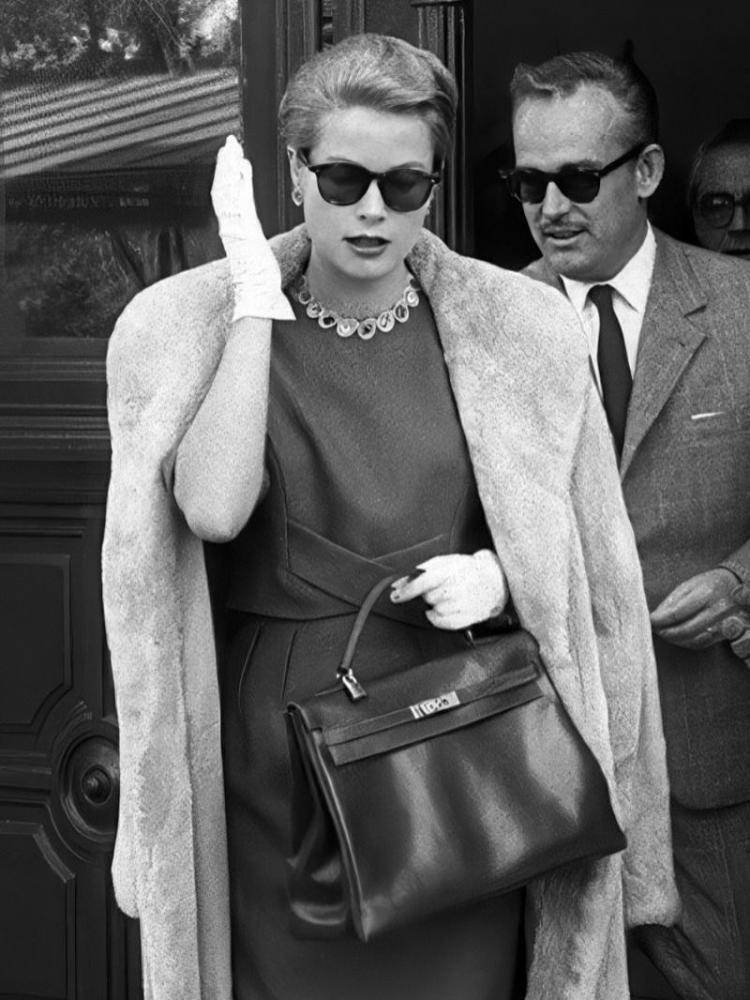
Hermès: The House That Built the Legend
Before we dive into Grace Kelly’s role, let’s understand the brand behind the bag.
From Saddlery to Luxury Maison
Founded in 1837 by Thierry Hermès, the company began as a harness workshop in Paris. Its clients were aristocrats who demanded the best saddles and bridles for their carriages. The attention to detail was unmatched: each stitch had to withstand tension, weather, and time. This dedication to durability and perfection is still visible in every Hermès handbag today.
Expansion into Leather Goods
By the late 19th century, Hermès anticipated a shift: fewer horses, more automobiles. Rather than fading into irrelevance, the house expanded into travel trunks, luggage, and eventually handbags. The same saddle-stitching techniques used for horse tack were adapted for bags—ensuring they were both elegant and indestructible.
A Brand Built on Craft
Unlike many luxury houses that rely on volume, Hermès has always resisted mass production. A single artisan takes ownership of an entire bag from start to finish. This continuity means each Kelly carries not only the Hermès name but also the invisible signature of the craftsperson who made it.
This philosophy of uncompromising quality set the stage for the Kelly’s eventual transformation into an icon.
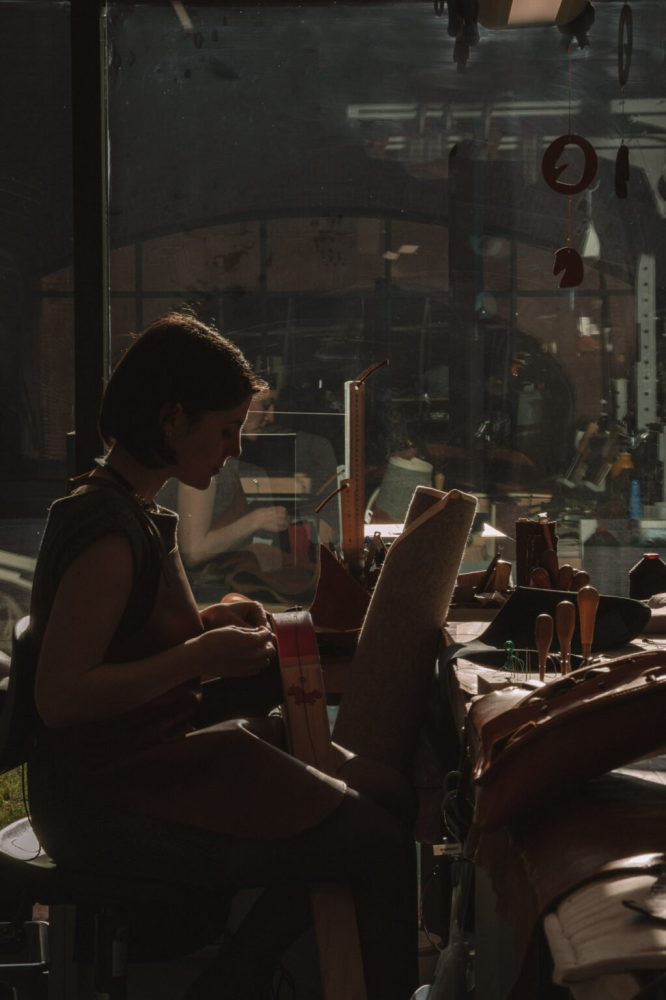
Before the Kelly: The Sac à Dépêches
In 1935, Robert Dumas, a member of the Hermès family, introduced the Sac à Dépêches.
Design Features
- Shape: A trapezoid, with clean lines and structured form.
- Closure: Two straps secured by a rotating clasp—functional yet chic.
- Purpose: Designed to carry documents, hence “dépêches.”
It was understated and versatile, appealing to sophisticated women who wanted discretion. Unlike trendy bags, the Sac à Dépêches wasn’t shouting for attention. Instead, it embodied restraint and authority—the qualities Hermès still champions.
Quiet Popularity
For two decades, it circulated among Hermès clients without fanfare. Women who knew Hermès appreciated it, but it was far from a global fashion statement. It took one woman—Grace Kelly—to change that.
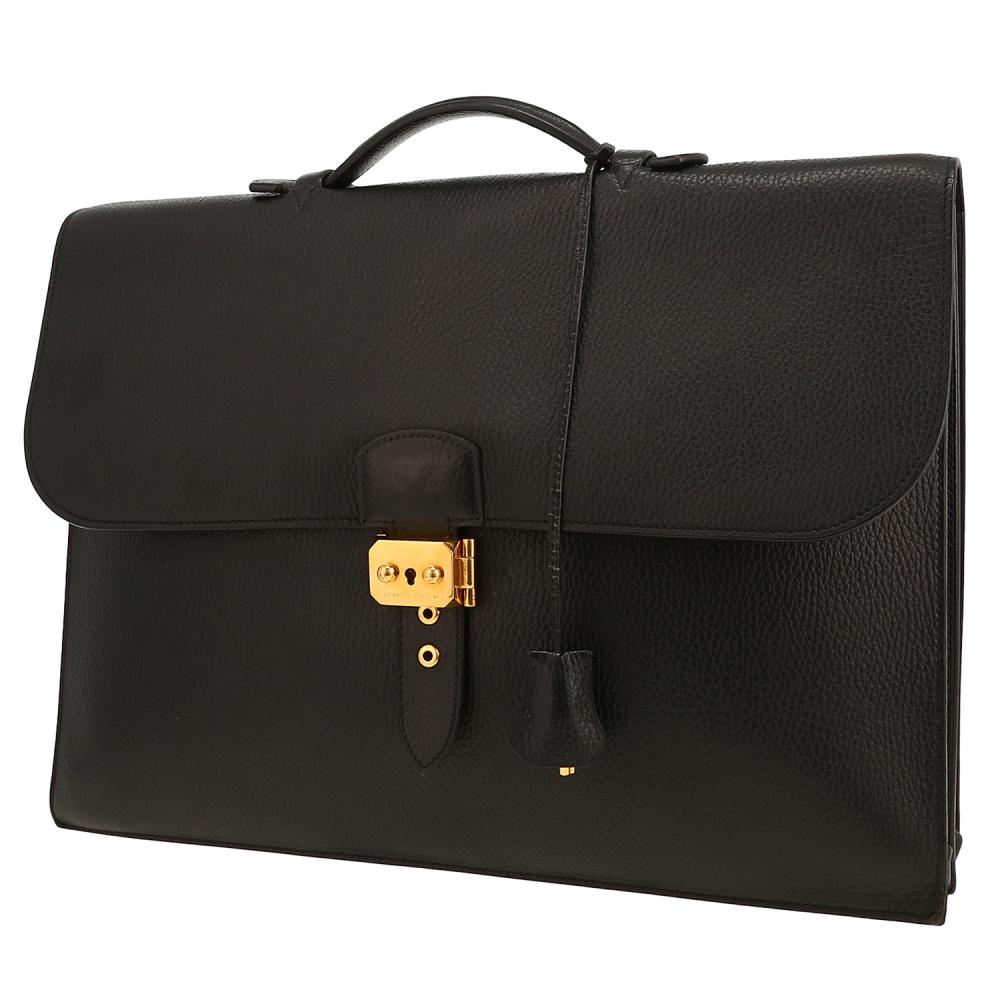
Grace Kelly: The Woman Who Defined Elegance
Early Life in Philadelphia
Grace Patricia Kelly was born in 1929 into an Irish-American family of means. Her father, John B. Kelly Sr., had won three Olympic gold medals in rowing and built a successful construction company. Grace grew up in privilege but also discipline, which shaped her polished demeanor.
Rising Hollywood Star
After studying acting in New York, she began her film career in the early 1950s. Hollywood took notice quickly. Within a few years, she starred in films that became classics:
- Mogambo (1953) with Clark Gable and Ava Gardner, which earned her an Academy Award nomination.
- The Country Girl (1954), where she shed her glamorous image for a serious role—and won the Oscar.
- Alfred Hitchcock thrillers like Dial M for Murder and Rear Window (1954), which showcased her icy elegance.
Meeting a Prince
Her life took a fairy-tale turn in 1955, when she met Prince Rainier III of Monaco during the Cannes Film Festival. Their courtship captivated the press. By 1956, Grace Kelly gave up Hollywood stardom to become Princess of Monaco, with a wedding watched by over 30 million people worldwide.
Her life was suddenly about more than fashion—it was about symbolism, grace, and the performance of royalty. And the accessories she carried became part of that story.
The Moment That Made History
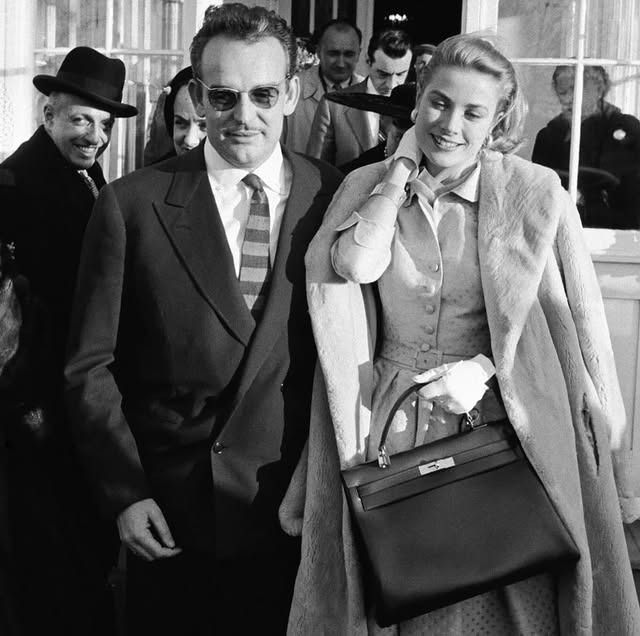
It was 1956, not long after her royal wedding. Grace Kelly was newly pregnant, and photographers trailed her constantly. In an attempt to protect her privacy, she used her Hermès Sac à Dépêches to shield her stomach from view.
The Power of a Photograph
The resulting photos, published in Life magazine and widely circulated, were unforgettable. There she was, elegant as ever, using a handbag both as a shield and as an accessory. Women noticed the bag’s structured elegance. Editors began calling it “the Kelly bag.”
From Sac à Dépêches to Kelly
The name stuck. Although Hermès officially renamed the bag in the 1970s, the public had already done it for them two decades earlier. One candid gesture by Grace Kelly gave birth to a timeless fashion name.
Anatomy of a Kelly Bag
Why does the Kelly continue to hold such power decades later? Part of the answer lies in its design.
- The Shape: Structured, trapezoidal, commanding attention without being flashy.
- The Handle: Single top handle, carried by hand or forearm—more formal than shoulder bags.
- The Closure: Straps loop through a turn-lock clasp, often finished with a tiny padlock and clochette (leather key holder).
- The Craftsmanship: 20–25 hours of meticulous hand-stitching by one artisan.
- The Materials: Options range from supple Togo and Epsom leather to exotic crocodile, ostrich, or lizard.
Every detail communicates discipline, structure, and refinement—much like Grace Kelly herself.
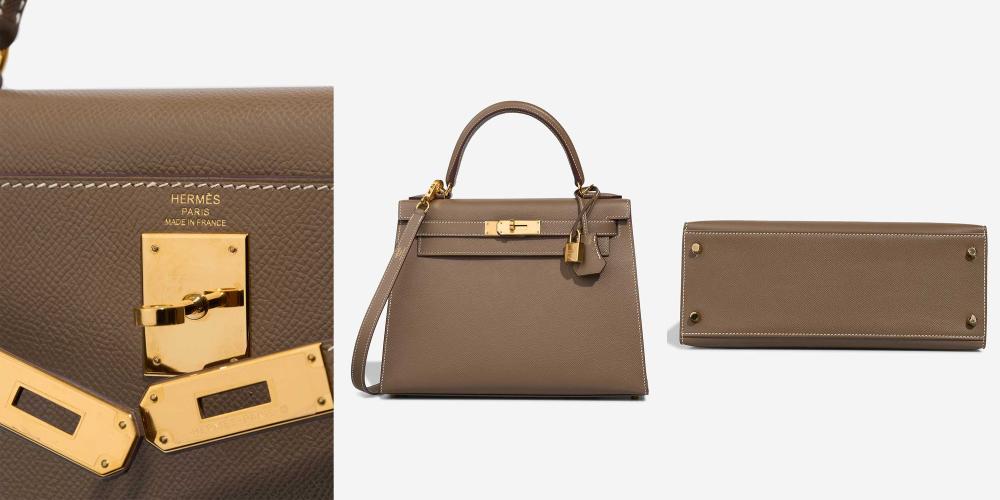
Grace Kelly’s Lasting Influence
Grace Kelly’s effect on fashion went beyond one bag. She embodied the elegance of simplicity. While other actresses embraced extravagance, she preferred clean lines, tailored suits, and understated accessories.
- Royal Grace: As Princess of Monaco, she reinforced the idea of restrained elegance in public life.
- Privacy with Poise: Using the bag to shield her pregnancy gave it symbolic weight—it wasn’t just fashion, it was dignity.
- Enduring Muse: Designers and fashion houses still reference Grace Kelly when discussing timeless style.
The Kelly bag became her most enduring fashion signature.
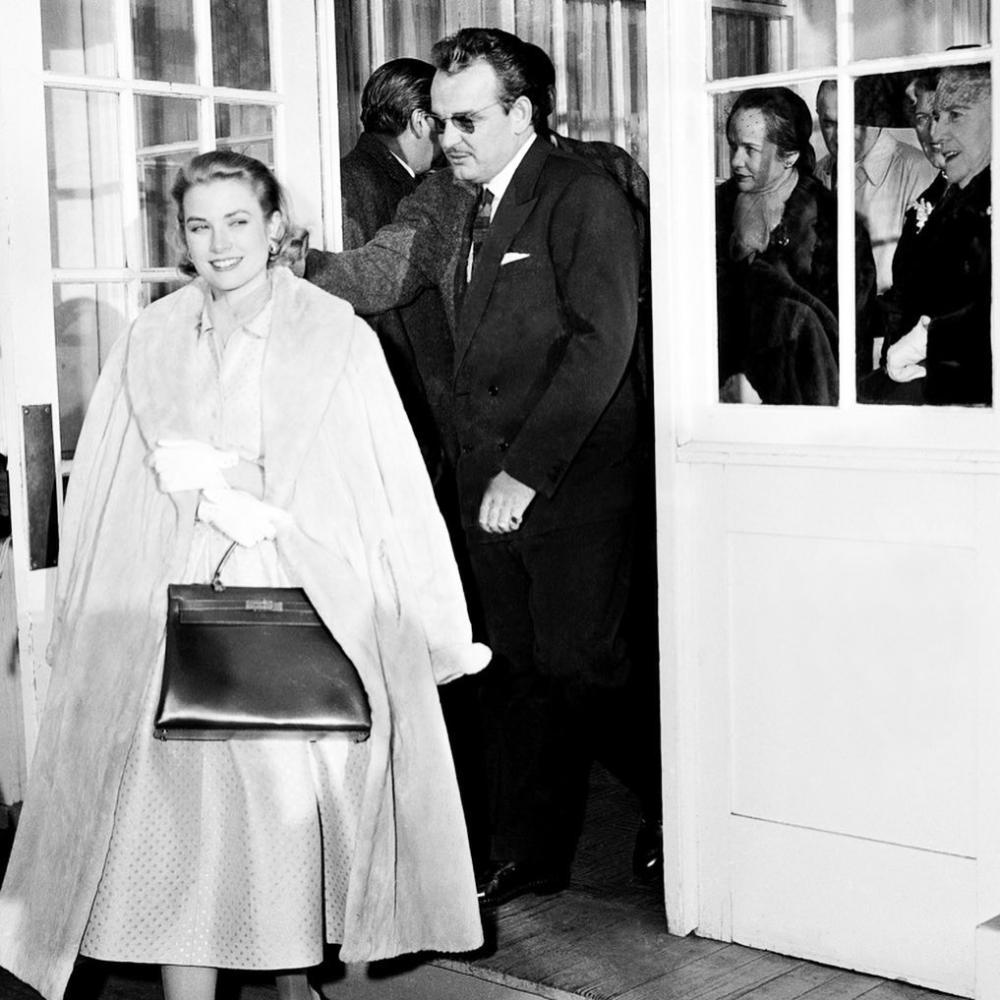
The Craftsmanship That Keeps It Exclusive
Training the Makers
Hermès artisans often train for years before they’re trusted with a Kelly. They learn the saddle stitch, which is made with two needles crossing through each hole in opposite directions. Unlike machine stitching, it doesn’t unravel.
Materials and Hardware
- Leathers: Box calf for glossy elegance, Togo for durability, Epsom for structure.
- Exotics: Crocodile Himalaya bags are considered the pinnacle of Hermès craft.
- Hardware: Palladium or gold-plated, sometimes encrusted with diamonds.
Time as Luxury
Each Kelly is produced by a single artisan, requiring patience and skill. This devotion to process is why Hermès produces fewer bags than demand—and why waiting lists stretch for years.
Kelly vs. Birkin: Two Queens of Hermès
The Kelly has a younger sister: the Birkin, created in 1984 for actress Jane Birkin.
- Kelly: Structured, formal, carried in hand. Associated with Grace Kelly and old-world glamour.
- Birkin: Roomier, softer, designed for everyday use. Associated with modern celebrity culture.
While the Birkin has dominated popular culture—appearing in songs, TV shows, and red carpets—the Kelly retains a quieter prestige. Owning one is less about flaunting and more about appreciating history.
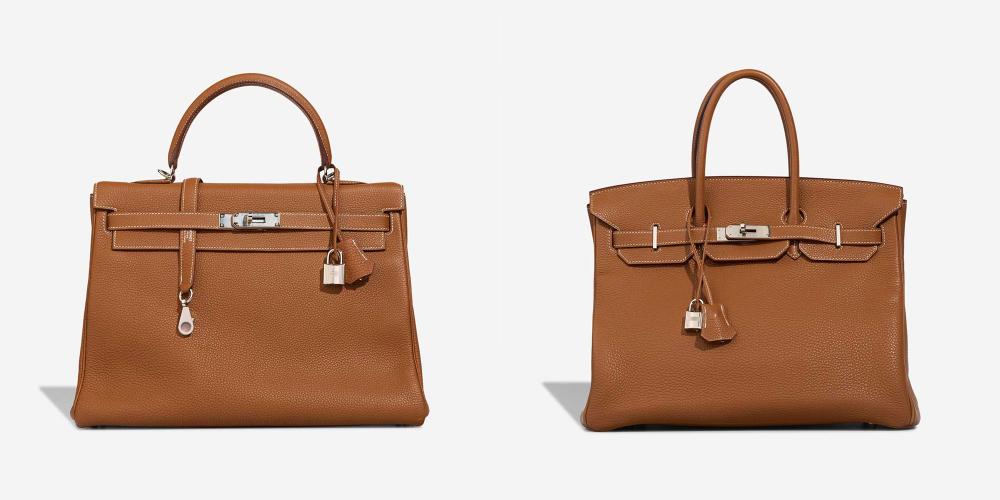
Cultural Impact Through the Decades
1950s–60s: The Grace Era
The Kelly becomes synonymous with royal glamour and Hollywood sophistication. Women across Europe and America aspire to “the Grace look.”
1970s: Official Renaming
Hermès formally embraces the public nickname, cementing the Kelly as a brand legacy piece.
1980s–90s: Power Dressing
The structured Kelly aligns with the sharp suits of businesswomen and the formality of European royalty.
2000s: Celebrity Revival
As paparazzi culture explodes, celebrities like Madonna, Jennifer Lopez, and Victoria Beckham are seen with Kellys. The bag’s exclusivity makes it more desirable.
2010s–2020s: Quiet Luxury
In the Instagram and TikTok era, the Kelly finds a new audience. Its history and scarcity make it the ultimate “if you know, you know” accessory. Influencers flaunt their Kelly collections as trophies of access and taste.
The Kelly as an Investment
Beyond fashion, the Kelly is considered a financial asset.
- Auction Records: A Himalaya Kelly with diamond hardware has sold for more than $380,000 at Christie’s.
- Appreciation Over Time: While most handbags depreciate, Kelly bags typically appreciate if well cared for.
- Collector Culture: Entire online communities and auction houses specialize in sourcing rare Kellys.
For many collectors, owning a Kelly isn’t just about carrying it—it’s about preserving a piece of fashion history.
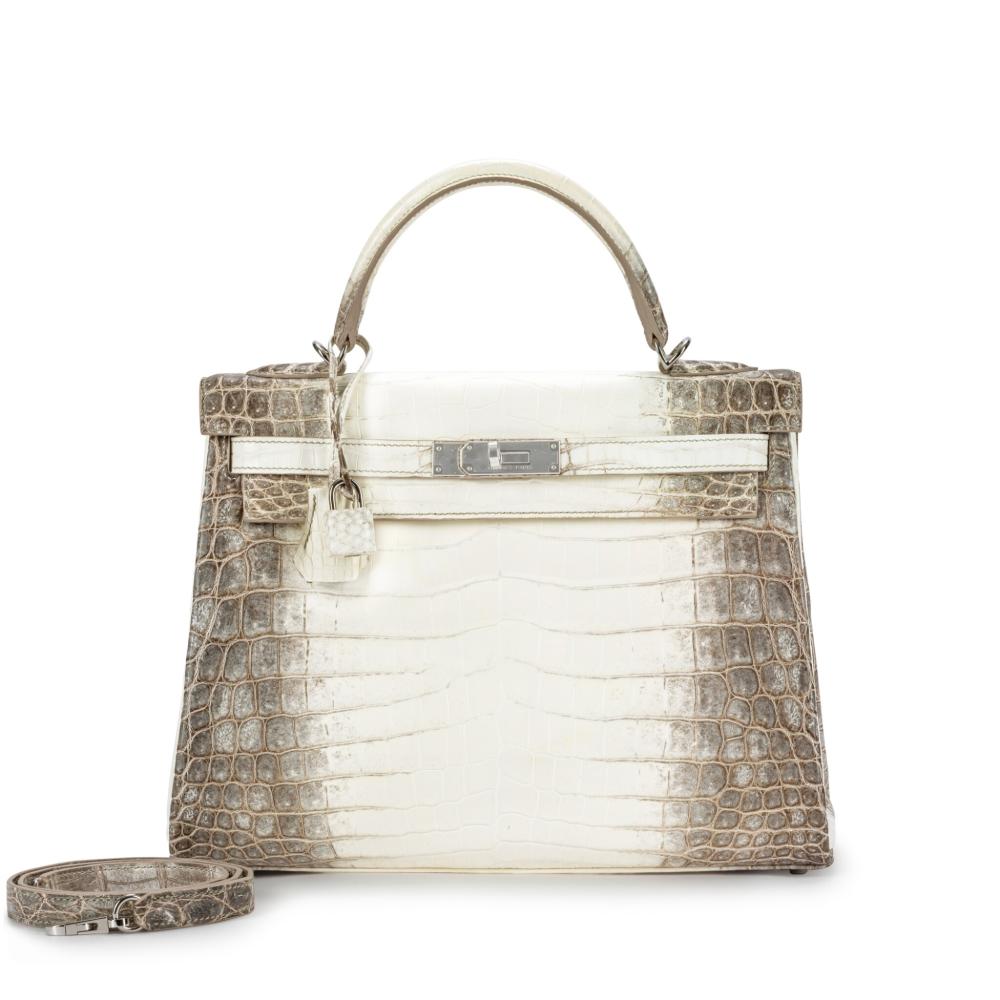
The Modern Kelly
Hermès continues to reinvent the Kelly without compromising its heritage.
- Mini Kelly 20: A smaller version that has become a favorite among younger collectors and influencers.
- Special Orders: VIP clients can commission unique colors, hardware, and stitching, making each bag one of a kind.
- Seasonal Twists: New leathers, seasonal shades, and limited editions keep demand surging.
Despite these variations, the essence of the Kelly remains unchanged since 1935—a design immune to passing trends.
Conclusion
The Kelly bag isn’t just a handbag. It’s a story of craftsmanship, culture, and one woman’s timeless influence. Grace Kelly may never have intended to change fashion history when she held her Hermès bag in front of flashing cameras, but she did. She transformed a practical Parisian design into a symbol of elegance recognized worldwide.
Nearly a century after its creation, the Hermès Kelly bag remains a marker of prestige, patience, and taste. To carry one is to carry more than leather—it’s to carry a piece of Grace Kelly’s enduring legacy.
For more insights, see this Hermès fashion history blog.
Recent Posts